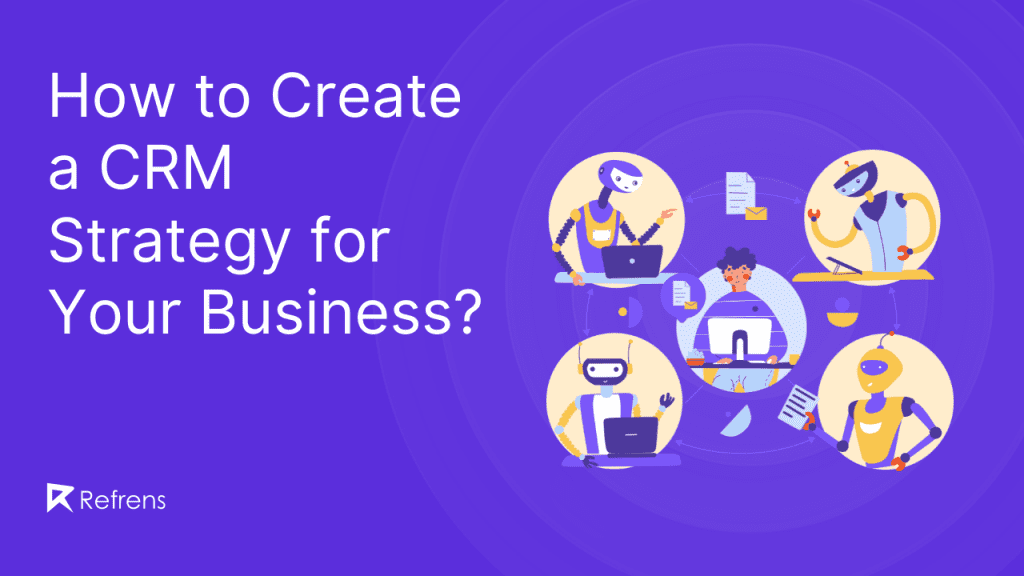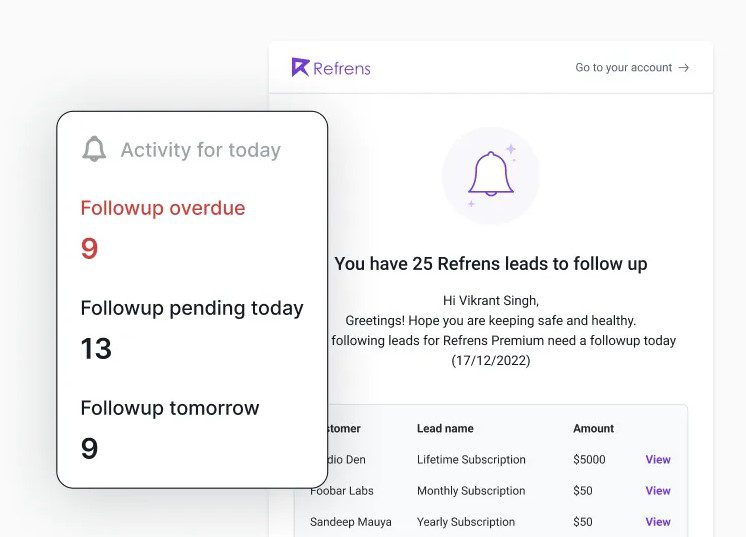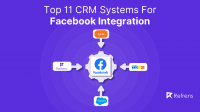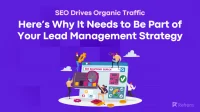Every business aims to strengthen relationships with existing and potential customers. That’s the key to sales and, ultimately, business growth, after all.
This is where a customer relationship management strategy comes in. A solid CRM strategy ensures a systematic way to identify potential client and customer needs, manage communications, and formulate better and personalized experiences.
In this article, you’ll learn the five steps you should follow to ensure your CRM strategy works. Let’s get started!
1. Define your CRM goals
To build a solid CRM strategy, you must first set goals based on where you are and what you want to achieve. Ideally, CRM goals should tie in with your business goals. For instance, if your business goal is to increase sales, then one of your CRM goals could be to reduce lead response time. After all, the faster a company responds to a lead, the higher its chances of converting the lead into a paying customer.
Create SMART goals. That just means you need to make them specific, measurable, achievable, realistic, and time-bound. Why? Because it will help ensure the clarity necessary to achieve them in the first place. When you know exactly what you want to achieve, it’s easy to craft effective strategies.
That said, here’s a SMART version of the sample CRM goal above: To reduce lead response time to five minutes by November.
Based on this SMART CRM goal, then, you could decide to, by March, hire X number of sales reps so more people can follow up with your generated leads quickly.
2. Define Your Audience
Defining your audience is a crucial step. It helps you determine the right approach when executing your strategies to meet your CRM goals. For instance, if you find most of your prospective customers reach out to you with a sales query on Facebook and Instagram, then the new sales reps you hire to meet your CRM goal of reducing lead response time to five minutes by November should be instructed to man those specific channels and not other platforms.
So, research your target audience’s lifestyles, preferences, psychographics, and demographics. Seek to understand their aspirations and pain points.
You can get these details by consulting the sales team or customer service teams, doing market research, and interviewing the customers directly.
Using the above info, create detailed personas as shown below:
Personas help you visualize and understand your audience better. They ensure the effectiveness of your CRM strategies, which in turn leads to increased consumer satisfaction, sales and customer loyalty.
3. Choose the Right CRM software
Now it’s time to choose the right CRM software. CRM software is a solution that stores the contact information of current customers and prospective clients, and manages and tracks brand interactions with them.
Around 80% of consumers have said they switched to a brand competitor because of poor customer experience. You can’t possibly ensure a good experience for them if you don’t monitor their communications with your brand and address their issues and queries the way they expect you to.
When choosing CRM software, consider the CRM goals you defined in the first step.
Your CRM goals will determine the CRM features you need to execute your strategies, which in turn will inform the CRM software you need to buy. For instance, if you want to reduce lead response time to five minutes by November, then you’ll want a CRM solution with pre-filled email templates your sales team can send to leads with just a few clicks.
But whatever the CRM features you opt for, make sure your CRM software is user-friendly, generates reports with valuable insights, and has a customizable dashboard. This last one will help ensure the tool presents the CRM metrics that are most relevant to your business. We’ll talk more about metrics later.
The software should also integrate with your existing tech stack. For instance, exploring Dialpad alternatives can help you identify call center technology solutions that seamlessly align with your CRM. There are CRM solutions that integrate well with specific call center technology solutions, eCommerce platforms, and event and web form tools.
Consider a CRM solution that has integrations with popular social media platforms like Instagram and Facebook as well. It will allow you to automatically view and manage your leads on those channels. With it, you can also easily respond to users who actively leave Facebook comments or even Instagram likes on your social media posts to enhance customer engagement.
Lastly, your CRM software should be able to adapt and scale as your business grows. It should be able to accommodate more users, manage more complex information, and handle more complicated tasks without compromising performance down the line.
After choosing the best CRM software, get the sales team and other relevant departments who will benefit from the tool–like your customer service and marketing teams, for example—on board. They’ll need training on how the software works to ensure they can get maximum value from it. Employee training also promotes software adoption, speeding up its integration into current business processes.
4. Use Automation and AI
Automation streamlines CRM workflows. By leveraging automation in your CRM software and other tools, your teams won’t have to perform repetitive tasks and can focus on other essential activities to ultimately achieve CRM and business goals.
For instance, with automation, your sales team won’t have to manually check which leads are due for a follow-up. CRM software can check this, and send them automated follow-up reminders:
The sales team can then just focus on writing those follow-up emails.
You can also automate administrative tasks like customer or lead data entry. There are CRM solutions that allow you to create web forms and integrate them into your website. As soon as someone fills out the form and hits send, the form data automatically gets sent to the CRM software.
Artificial intelligence is another type of technology you should leverage in your CRM workflows. AI simulates human cognitive functions and can help you personalize communications. Is that even important, you ask? Well, just look at the stats. Over 70% of consumers get frustrated when businesses fail to deliver personalized experiences.
Here are some AI use cases for personalization:
- Chatbots giving smart product recommendations or offering relevant customer support resources
- Generative AI analyzing employee-fed customer data and coming up with customized messaging
- AI looking at social media lead and customer profiles and updating interactive emails based on information found
With automation and AI, you can streamline your CRM processes, while ensuring your communications are tailored to prospective client and individual customer preferences, needs, and behavior.
5. Track Performance
Tracking your performance will help you determine whether you’re on track to meeting your CRM goals. The best CRM systems track all touchpoints in the buyer journey, so it should be easy to monitor the effectiveness of your customer relationship management strategy.
But what exactly should you monitor in the first place? The specific metrics you should measure should depend on your CRM goals. Here are some typical CRM metrics:
- Close rate or number of online bookings
- Lead response time
- Conversion rate
- Rate of renewal
- Customer retention rate
- Average resolution time
- Net promoter score
If you’re meeting the numerical values attached to your initially set metrics, then you’re on the right track. If not, then you’ll have to adjust your CRM strategy.
Conclusion
A well-implemented CRM strategy is your game plan for effective customer relationship management and improved business performance.
We’ve discussed the five steps you should follow to ensure an effective CRM strategy for your business. Start by defining your CRM goals, then identify your target audience. You can get the necessary data by doing your own market research, asking your sales team and other relevant departments, or going directly to your customers or prospective clients.
Don’t forget to choose the right CRM software to suit your needs. Leverage automation and AI, too, to ensure the efficiency and effectiveness of your communication campaigns.
Finally, measure your performance. You want to make sure you’re on track to meeting your CRM goals so you can make the necessary adjustments.
Now it’s time to implement your robust CRM strategy and reap excellent results.
Also Read:





















